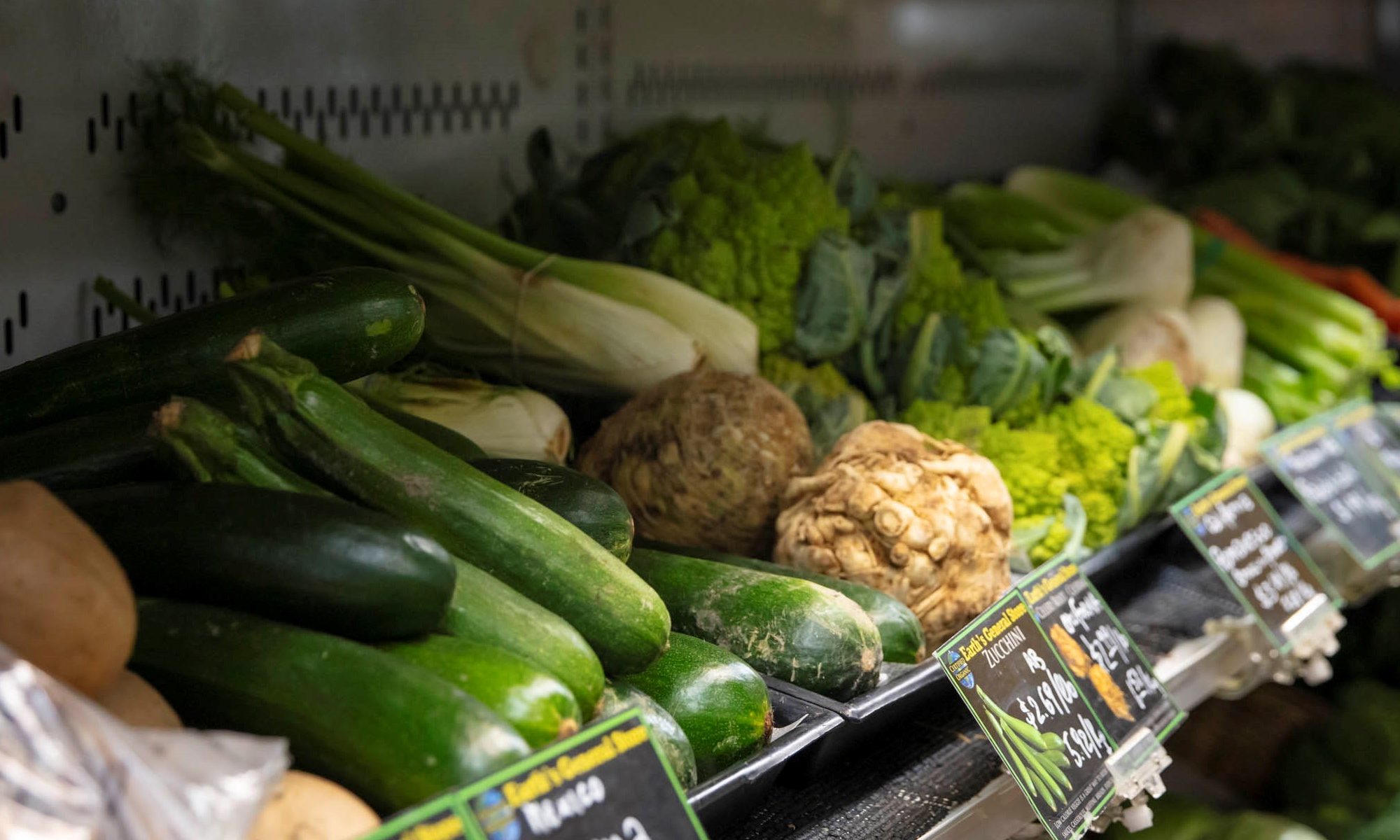What is food waste?
Put simply, food waste is any part of food that is not eaten. Food waste occurs throughout our food system, all the way from production, to transportation, to retail, and through to individual consumer’s fridges and pantries. As consumers we would recognize it most as food we throw away after we purchase it. Common food waste in the home includes:
- Food that spoils before we eat it
- Food scraps that we cannot use or choose not to use
- Overportioned cooked food (aka “leftovers”) that isn’t eaten
As food waste happens at every stage of our food system, it should be addressed from a systemic lens, especially due to the problems it causes in relation to the climate crisis.
Why is food waste a problem?
When we consider the climate crisis, food waste is a substantial barrier to our goals to reduce our global carbon footprint. According to Project Drawdown, “one third of the food raised or prepared does not make it from farm or factory to fork” (Project Drawdown). Canada also bears responsibility for our current food waste problem – food waste costs the Canadian economy up to $100 billion dollars annually (NZWC) and the average Edmontonian’s garbage contains 22-26% food waste as of 2016 (City of Edmonton) (this stat is pre-wastecart system).
Let’s examine five problems associated with food waste:
Greenhouse Gases
Organic matter that ends up in a landfill produces methane gas. This is a greenhouse gas that contributes to global warming, but is 21 to 25 times more potent than carbon dioxide (Change for Climate).
Monetary Cost
Consider food waste as throwing away money, and costs the average family of four approximately $1,760 annually (Change for Climate). All of the food waste that ends up in a municipality’s waste stream requires resources in staffing, facilities, transportation, etc. to dispose or divert it. This cost is passed on to utilities and then down to the citizens via taxes.
Land space
Growing food takes up a lot of land space, livestock even more so than plant-based food – up to eight times more! Landfills and other waste diversion facilities also occupy a lot of land, and are often located in marginalized or racialized communities.
Waste of resources
It’s in the name! Food waste is ultimately a waste of resources. Many of those resources are scarce already, or could be used in a more positive and effective way. This includes water for irrigation (New Food Magazine), and fossil fuels for production and distribution. As we transition away from fossil fuels and work to conserve our water, we need think hard about using our resources more efficiently.
Hunger and food insecurity
4.4 million people in Canada are food insecure (Zero Food Waste). There is no logical reason for anyone to go hungry while so much food waste exists. Many food banks or mutual aid groups already exist to divert that food which would otherwise be wasted. Setting these up on a larger scale could make a huge difference to our carbon footprint, and more importantly, to people’s lives.
Food waste is a problem because the monetary cost, carbon cost, and human cost of those resources is so high. Eliminating food waste throughout the food system is a large undertaking and will take concerted efforts by all levels of government, businesses, and community groups. But the positives would be well worth the effort. Thankfully, Edmonton and many of the surrounding municipalities have already taken a big step toward diverting food waste by introducing a cart-based waste collection system.
Even more relevant to you, reader, is that food waste can easily be prevented by individuals and households by taking a few simple steps.
How can I prevent food waste in my home and community?
In high income countries, the majority of food waste happens at the retail and household level (Drawdown). Therefore, eliminating or slowing food waste in our homes is one of the easiest actions we can take to reduce our individual emissions and act against climate change. They may seem small, but small actions add up to big changes!
Here are EIGHT ways you can take to tackle food waste in your home and community:
Low effort:
- Learn how to store your food properly to keep it fresh longer (Love Food Hate Waste)
- Use the Flashfood app to help prevent food waste in your local grocery store
- Donate to local food banks or organizations working toward food security (ex: Leftovers Foundation)
Mid effort:
- Meal plan and make grocery lists to ensure you only buy what you know you will eat
- Move towards a more plant-based diet
- Save your food scraps and make DIY veggie broth
Most effort:
- Set up a Little Free Pantry in your yard or community space
- Volunteer at your local food bank or shelter; they divert a lot of food from grocery stores and retail stores and instead use it to help our city’s vulnerable folks (note: many food bank and community organizations have paused their volunteer opportunities due to covid-19 restrictions)
- Build a backyard composter (note, composting should be used as a last resort. We know wasted food happens, and this is the next best thing to using your food.)
FURTHER READING AND RESOURCES
Food Waste (City of Edmonton)
The Problem of Food Waste (Change for Climate)
How Cutting Your Food Waste Can Help the Climate (BBC)
Taking a Bite Out of Food Waste (Taproot Edmonton)
U of A researcher seeking input from food businesses on reducing waste (Edmonton Journal)
For The Wild Podcast, Episode 238 “Free Food for Liberation” (transcript available at link)Edmonton’s food waste under scrutiny in new Youth Council report (CBC)


